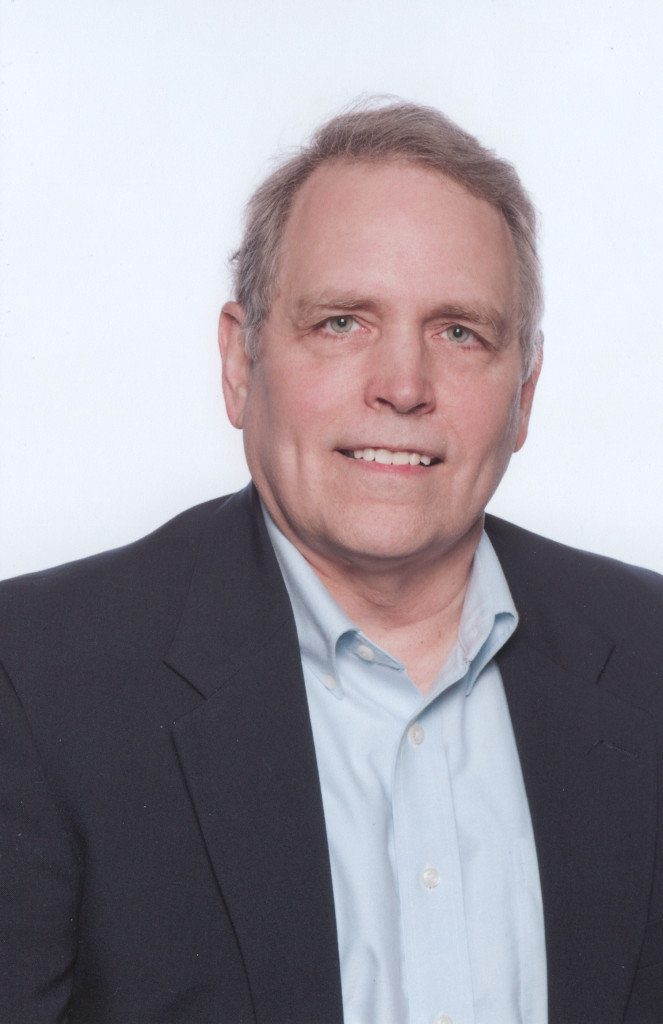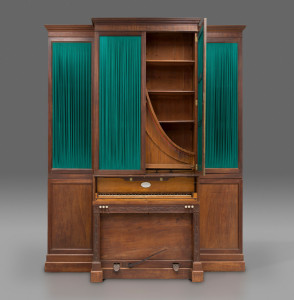John R. Watson is both the conservator of instruments and mechanical arts (since 1988) and the associate curator of musical instruments (since 2008) at the Colonial Williamsburg Foundation. He has also been a maker of reproduction keyboard instruments; 32 instruments bear his name, including three in daily use there. He is the author of two books, including Changing Keys: Keyboard Instruments for America, 1700–1830 (2013), which serves as a catalog detailing 38 keyboard instruments in Colonial Williamsburg’s collection and accompanies the exhibition of the same name to which three important, recently conserved keyboard instruments will be added September 3.
Traditionally, conservators and curators have differing points of view about the objects under their care, but you handle both. How do you manage this?
While their interests overlap a great deal, conservators and curators have different responsibilities in their work with historical and artistic works. Conservators are focused on the physical well-being of an object, standing guard against whatever threatens its long-term survival. They also apply skills to improve stability and appearance when damage as occurred. Curators are primarily responsible for discerning the cultural importance of an artifact, researching its social history and meaning, then presenting and interpreting it to the public through publications and exhibits.
Do historic musical instruments present any special challenges?
Unlike most other museum objects, musical instruments are a medium with a message for not just our eyes, but also our ears. We can fully appreciate the beauty of a chair by looking at it, but to experience the beauty of a historic musical instrument, it has to work. It is a paradox that restoration improves an instrument’s performance as it simultaneously threatens the historical evidence in its old surfaces. I have usually worked through the paradox with a rule of thumb: limit restoration to those instruments that had already been compromised by past restorations. In those cases, degraded original materials had already been lost. But when a piano, for example, still had its original strings, leather and cloth, I usually left it alone; optimized as a historical document, complete and unaltered by restoration, but unplayable.
Can you give an example of an especially challenging situation in which you had to negotiate these two approaches?
Yes. The large 1799 organized upright grand piano was untouched by past restorations and as a historical document, it was pristine. It had also been reduced to a pile of loose parts too weak and damaged even to be assembled. The arguments for preserving it as an untouched record of a lost period craft tradition could hardly have been stronger. The prospects, on the other hand, of seeing and hearing again what must have been the largest and most complex domestic musical instrument in 1799 America was equally compelling. In the end, I made the decision based on a remarkable series of unlikely circumstances that brought together the surviving instrument, its local history and the coincidental availability of a great diversity of specialized skills. It seemed the stars were in alignment. We proceeded with a “restorative conservation” approach. That is, we restored the musical and aesthetic qualities using sometimes nontraditional and state-of-the-art treatment methods to preserve the historical evidence that tends to be lost in conventional restorations.
Which came first for you: conservator or curator, and which presents the greatest challenges to you professionally?
It is hard to say what came first. From the moment I began planning the construction of my first clavichord as a college student in 1972 I had an equal compulsion to research the cultural and technological history of it and all keyboard instruments. Both approaches to the past are equally challenging and equally rewarding. I consider myself to be one of the lucky ones, pursuing a career that is also a passion.
How were the keyboards in “Changing Keys: Keyboard Instruments for America, 1700–1830” initially selected for the exhibition and how did the pieces to be added to the exhibition in 2016 come to be included?
We have always tried to acquire instrument types that will give visitors a truthful impression of what our American ancestors would have experienced here during the Colonial and Early Republic periods. It is ironic that the 1799 organized upright grand piano would seem more at home in one of the treasure houses of England yet it first arrived as a new instrument here in Williamsburg. In that instance, the superlative example also just happens to be one of the locals.
With your work focused on the care of musical instruments, do you play them as well?
The culminating moment in music is a performance by a skilled musician, but that is only the last and most public act in a long process. Among the artists and skilled technicians leading up to that moment are the composers, instrument makers and, in the case of historic instruments, the caretakers, restorers and conservators who see to the instrument’s preservation. All of these people have skills rarely found in the concert performer, yet they are no less part of a great musical experience. With a degree in vocal music, I am a lover of music, and a maker and conservator of instruments, but not a keyboardist.






